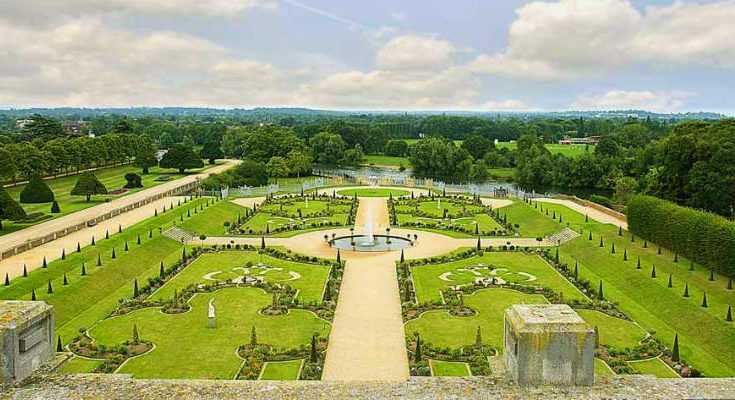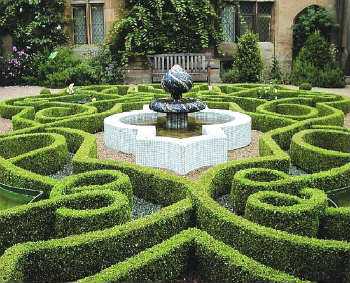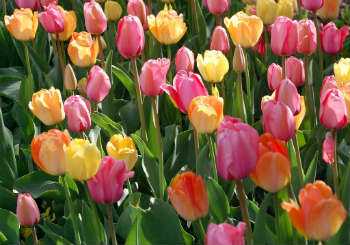A History of British Gardening Series – Tudor and Stewart

In our History of British Gardening Series – The Renaissance movement was sweeping across Europe and eventually Britain in the 15th century. It endeavoured to capture the classical arts styles of ancient Rome.
| History of British Gardening Series |
|---|
| Roman |
| Medieval |
| Tudor and Stewart |
| Restoration |
| Georgian and Regency |
| Victorian |
| Edwardian |
| Modern |
Timeline
c.1492 Christopher Columbus brought back many new plants from the Americas.
c.1514 Cardinal Wolsey buys Hampton Court and sets about improving it to impress Henry VIII.
c.1525 Henry VIII is so impressed with Hampton Court, he has Wolsey arrested and takes it for himself. Later Henry VIII began to develop Hampton Court to rival Fontainbleu in France. Work began on the Privy Garden, the Mount Garden and the Pond Garden in 1532.
c.1528 The renaissance garden at Chateau de Fontainebleau in France was started. The renaissance style, which included knot gardens and statues, was to have a huge influence on gardening throughout Europe.
1534 Henry VIII splits with Rome and dissolution of the monasteries begins. This dissolution destroys many of the established herbal gardens, orchards and vineyards that traditionally had been looked after by Roman Catholic monks.
1564 Aristocrat William Cecil buys the manor house Theobalds in Hertfordshire, and redesigns the gardens. The formal garden was modeled after Fontainebleau in France. John Gerard was the superintendent.
1597 John Gerard publishes his bestseller Herball, also known as a General Historie of Plants.
1611 Plant hunter John Tradescant the Elder establishes the gardens at Hatfield House.
1621 The first botanical garden is set up in Britain, The Oxford University Botanic Garden. The garden is founded by the Earl of Danby.
1629 John Parkinson publishes the book Paradisi in Sole Paradisus Terrestris. The book contains descriptions of more than 1,000 plants, featuring 800 illustrations.
1630 John Tradescant the Elder becomes head gardener to Charles I.
1638 Tradescant the Elder dies and his son becomes the new royal gardener.
Tudor and Stewart style of gardening
The Renaissance movement was sweeping across Europe and eventually Britain in the 15th century. The movement endeavoured to capture the classical arts styles of ancient Roman.
Gardens throughout the 16th and 17th century were formal and symmetrical and enclosed with fences, walls or even moats. The gardens were enclosed, usually by a wall, hedge, fence or moat, because they were considered to be a private area and part of the house.

Knot gardens, which became popular in England in the 16th century, were usually constructed from box or santolina. Flowerbeds often nestled within the low, intricate patterns. But more commonly grass, or even coloured sand or gravel, formed the base.
Mazes became popular in Elizabethan times. The Tudor period was a time of travel and conquest. It’s thanks to famous explorers such as Christopher Columbus and the English sailors Walter Raleigh and Francis Drake that many plants were being discovered around the world as the English extended its empire.
Tudor and Stewart characters
The Tradescants (1570 to 1662)
The Renaissance movement was sweeping across Europe and eventually Britain in the 15th century. The movement endeavoured to capture the classical arts styles of ancient Roman.
The Tradescants were two of the first professional gardeners to start scouring the world in search of plants that could be brought back to England and used ornamentally in gardens.
John Tradescant the Elder (1570 to 1638) was head gardener at Hatfield House and travelled extensively to Europe, particularly Holland and France, to bring back plants.
Putting his life at risk over his passion for plant collections, Tradescant the Elder joined an expedition to fight Barbary pirates off the coast in North Africa in the hope of securing a golden Barbary apricot. He also travelled to Russia in 1618 on a plant hunting expedition. In 1630 he became gardener to Charles I.
John the Younger (1608 to 1662) originally trained and worked as his father’s gardening assistant. He travelled extensively in Virginia, America, collecting plants until he was called back to England to take over as royal gardener after his father’s death in 1638.
Many of the plants commonly associated as being typically English were introduced by the Tradescants, including phlox, lupins, golden rod and Michaelmas daisies. Both father and son are buried at St Mary-at-Lambeth, now the Museum of Garden History.
John Gerard (1545 to 1612)
John Gerard was born in 1545. He originally trained as a barber and surgeon but developed a passion for plants which he pursued in his garden in the village of Holborn.
After becoming superintendent at Theobalds in Hertfordshire for the aristocrat William Cecil, Gerard introduced the white mulberry and distinguished 12 types of phillyreas, which were used for topiary.
In 1599 his book Herball was published. It listed native plants and introduced ones with descriptions of their medicinal and ‘magical’ properties.
Tudor and Stewart themes
Potatoes
The humble spud was the staple diet for many people after its introduction to Britain.Traditionally, it’s believed to have been introduced to the courts of Elizabeth I by Sir Walter Raleigh from Virginia, America. More than likely, the Spanish introduced the potato to Europe. Potatoes probably reached Ireland before England and it’s possible that Sir Walter introduced them from his Irish estate.
Tulips

Mulberries
James I was inspired by the amount of money to be earned by the silk trade. So he decided to plant mulberry trees, which silkworms feed on to create their silk. More than 1,000 trees were planted at various sites, as well as a four-acre plantation at Buckingham Palace. Silk worms eat the leaves of the white mulberry. Unfortunately, James planted the black type of mulberry. Buckingham Palace still has an extensive collection of mulberries in its gardens.
The original content was published on the BBC Gardening website, however the Design section with all of its content has been removed. We try to keep this great content alive here on the Gardenlife Pro site.
